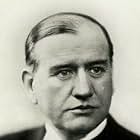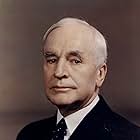Part VII of the "Why We Fight" series of wartime documentaries. This entry attempts to describe the factors leading up to America's entry into the Second World War.Part VII of the "Why We Fight" series of wartime documentaries. This entry attempts to describe the factors leading up to America's entry into the Second World War.Part VII of the "Why We Fight" series of wartime documentaries. This entry attempts to describe the factors leading up to America's entry into the Second World War.
- Awards
- 1 win
Photos
- Self
- (archive footage)
- Self
- (archive footage)
- Self
- (archive footage)
- (as A.A. Berle)
- Self
- (archive footage)
- Self
- (archive footage)
- Self
- (archive footage)
- Self
- (archive footage)
- (as Galleazzo Ciano)
- Self
- (archive footage)
- Self
- (archive footage)
- Self
- (archive footage)
- Self
- (archive footage)
- (as Josef Goebbels)
- Self
- (archive footage)
- Self
- (archive footage)
- Self
- (archive footage)
- Self
- (archive footage)
- Self
- (archive footage)
- Self
- (archive footage)
Storyline
Did you know
- TriviaIn the year 2000, the United States Library of Congress mandated that this film (and the other six documentaries in the 'Why We Fight' series)were "culturally significant" and selected them for preservation in the National Film Registry.
- GoofsTwice there appears an animated clip showing about a dozen fully-equipped US troops in gray silhouette marching briskly left to right over a background graphic; however, a close look shows the "soldiers" actually wearing narrow-brimmed office-worker-style civilian hats rather than army helmets.
- Quotes
[the film explains the dire consequences for the United States of an Axis victory in Eurasia]
Narrator: German conquest of Europe and Africa would bring all their raw materials, plus their entire industrial development, under one control. Of the two billion people in the world, the Nazis would rule roughly one quarter, the 500 million people of Europe and Africa, forced into slavery to labor for Germany. German conquest of Russia would add the vast raw materials and the production facilities of another of the world's industrial areas, and of the world's people, another 200 million would be added to the Nazi labor pile. Japanese conquest of the Orient would pour into their factory the almost unlimited resources of that area, and of the peoples of the earth, a thousand million would come under their rule, slaves for their industrial machine. We in North and South America would be left with the raw materials of three-tenths of the earth's surface, against the Axis with the resources of seven-tenths. We would have one industrial region against their three industrial regions. We would have one-eighth of the world's population against their seven-eighths. If we, together with the other nations of North and South America, could mobilize 30 million fully equipped men, the Axis could mobilize 200 million. Thus, an Axis victory in Europe and Asia would leave us alone and virtually surrounded, facing enemies ten times stronger than ourselves.
- ConnectionsEdited from The Negro Soldier (1944)
The early films in the series focus on specific time periods or theatres of operation. This film is a little different. It is in two unequal parts, the first showing American soldiers what they are fighting for -- a look at America in the years up to 1945 -- while the second gives an overview of the war beginning with Manchuria in 1931 and ending with Pearl Harbor.
The first part is interesting for its contemporary portrait of America. It presents a view of US society which tries to be liberal and inclusive. It does show some conventional imagery, Coke bottles, drum majorettes, and the like, but it is more provocative than that at times. Trade unions are acknowledged. Prohibition is forcefully declared to have been "a mistake".
The film strives to enfold all ethnic, cultural, and social groups within the Stars and Stripes. There is a long sequence showing different nationalities -- Hungarian, Portuguese -- and this sequence ultimately includes the American Negro and the Chinaman, to use the terms current at the time. By my count, there are seven brief scenes showing the former, two the latter. The liberality of the filmmakers required that blacks and Asians by shown; the context of the time required that they be shown to this limited extent. This makes an illuminating "inclusivity benchmark" for anyone who is keeping track of such matters. The images of blacks are mostly stereotypical -- picking cotton, fishing, racing, sitting in church -- but at least the final one shows a black man firing back at Pearl Harbor.
The parade of national groups in the US makes another point which could be noted. The list does include Italians and Germans, but the Japanese are omitted. (The Japanese of course were receiving special treatment in internment camps, as they were here in Canada.)
Social groups are shown, one face at a time, partly to the rhythm of the rhyme "Rich man, poor man, ... doctor, lawyer, ...". The first half of the actual rhyme, "beggarman, thief", is left out for obvious reasons, but the second is also avoided: "Indian chief". In 1925, or even 1935, the temptation to cut to a shot of someone in a Sioux headdress would have been irresistible, but that does not happen here. Does this sensitivity presage the new approach to native issues in the post-war adult Western?
The second, larger portion of the film is a retrospective, dealing with the progress of the war throughout the world. The lead-up to 1939 is well summarized, and includes footage of Ethiopia (Haile Selassie) and Spain (Der Führer shaking hands with El Caudillo). American legislative changes in response to the evolving world situation are covered in detail, with attention given to Gallup poll results. The war in its different campaigns is then reiterated.
Some of the political assumptions in the latter part of the film caught my notice. The Unholy Trinity of the Axis Powers ("Death, Inc.") consists, as it does throughout the "Why We Fight" series, of Mussolini, Hitler, ... and Emperor Hirohito, NOT Gen. Tojo, or any other member of the army clique. (After the war, the decision was made to preserve the Japanese monarchy, so the God-Emperor was falsely exonerated and blame passed to the military.)
The section on subversion shows quite a lot of the German-American Bund, including footage of American Nazi goons beating a heckler in Madison Square Garden. We also see a little of isolationist Lindbergh, Hitler's chum. Great attention is given to the threat to South America, where sinister German immigrants are shown conspiring in Ecuador, Argentina, and Brazil (side by side with Japanese immigrants there). This is still a propaganda film so hemispheric solidarity is absolute and unimpugnable. There is no admission made at all of open Latin American sympathy for Fascism or of coercive American arm-twisting to get governments to toe the US policy line.
The film ends with the "day that shall live in infamy", but a modern viewer is left thinking of the hopeful vision shown of America still to come -- hydroelectric projects (to the tune of Rhapsody in Blue), that tribute to US "inventiveness and enterprise", the "television", and especially what the film calls "the future", the cloverleaf highway interchange -- the goals attained through so much sacrifice. How prescient.
Details
- Release date
- Country of origin
- Language
- Also known as
- Why We Fight, 7
- Production company
- See more company credits at IMDbPro
- Runtime1 hour 10 minutes
- Color
- Sound mix
- Aspect ratio
- 1.37 : 1
Contribute to this page

























